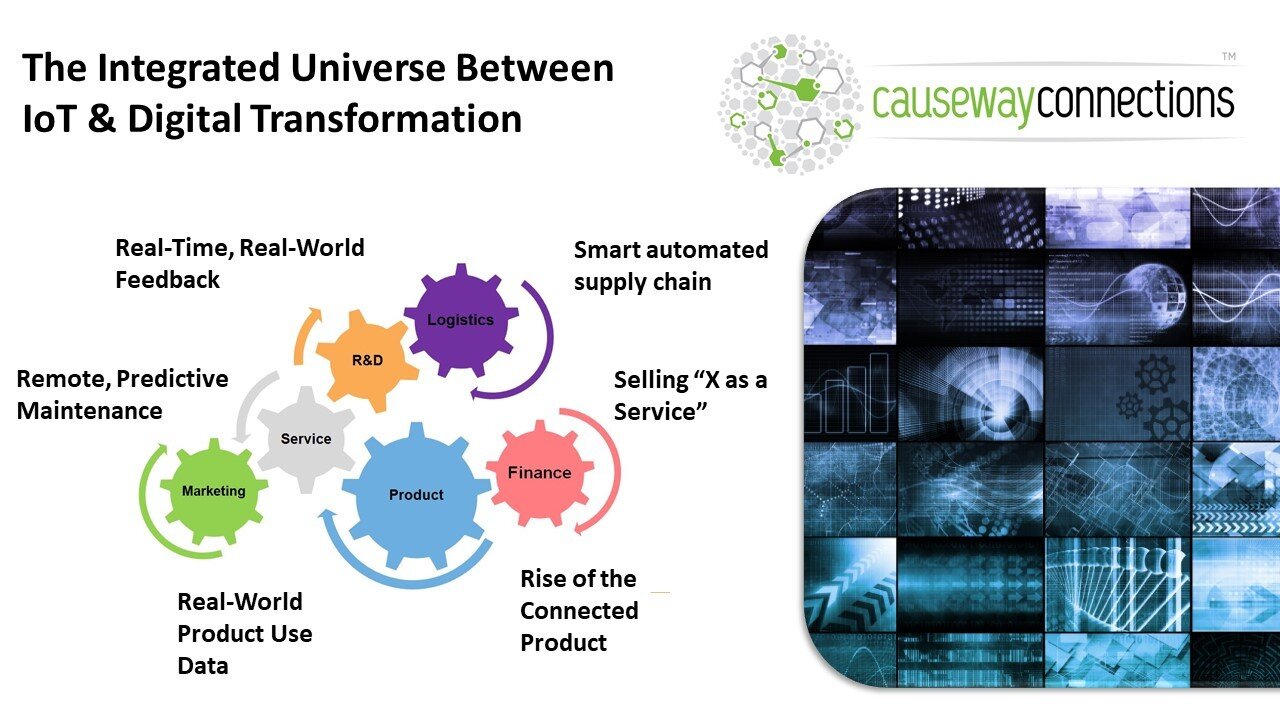Created Business Value From The Rise Of The 'Connected Product'
Plenty has been written about the Internet Of Things (IoT), to the point of skepticism and fatigue from those machine builders who jumped in early hoping to make a big splash, and those end-users who struggled to reap the benefits of being ahead of the innovation curve. Recently I have had great conversations from executives on both sides of the IoT landscape, all sounding the same clear message. They asked that the industry stop talking about devices, connectivity, sensors and 'tech gobbledygook', and instead show the business value, or better still, 'The art of the possible'.
Perhaps the industry is at the maturity stage where everyone is finding IoT solutions to be difficult to implement at scale, with security, and to be monetized to a level where everyone in the ecosystem is happy. One CEO asked the challenging question, 'Can we be disintermediated and/or where can we disrupt the value chain'? They went on to ask 'Do we need to support new business models to be defensive of our competition, or disruptive to them?'
How many IoT projects do you know that have taken this long term approach rather than simply diving into a proof of concept (PoC) and then not knowing what to do next? To be honest with you - I have asked over 500 customers to see their Return On Investment on IoT projects -- and I've heard back from less than ten. Isn't this a huge problem that the C-suite should be resolving? These are the tough questions that should be asked.
In parallel, IoT and companies who want to be run as digital businesses don't spend the time to integrate data from the connected devices to create business value. In the past I have talked about the need to create an 'open data platform', one that is shared by all of the groups involved in supporting their customers' experiences. Digital end to end workflows need to be seamless, continuous, and run smoothly - product or sensor data cannot be siloed. One executive described it as the need for a 'super aggregator' of all of the sensor data. They stopped short of saying that the solution that they were looking for was one large API (application programming interface).
The figure above shows what could happen to the value chain, or business work flow, when IoT and DX (Digital Transformation) are integrated. As the blue wheel (the Smart Connected Product) spins, many other groups are impacted. In this cloud-based, and network connected business model, live feedback from products has to reach a broad range of departments.
For example, this data needs to be accessible to the customer service and logistics support teams in order to help their clients keep systems and products up and running, using new means to observe the issue in place. The product development and R&D teams need to be able to see the results of how products are being used and how to improve on their quality. In this highly personal or customized world, marketing should be driving programs based on insights to improve the go-to-market planning and branding. Meanwhile, finance should be considering the impact of using product connectivity to optimize AI-based revenue streams from new services (predictive maintenance contracts), financing, warranty and leasing operations. The ultimate goal should be to move to a consumption-based 'as a service' model.
Data from connected products that end up in siloed IoT solutions ages quickly and creates no long term business value. RoI expectations will never be met and frustration will quickly set in. However, the more data (both product and contextual) that can be integrated into a digital business model, the larger the business value created by IoT. Companies who have embraced IoT and DX as a single solution have been successful because they have always answered the question 'what role and where in this new value chain will your connected product play?'.

